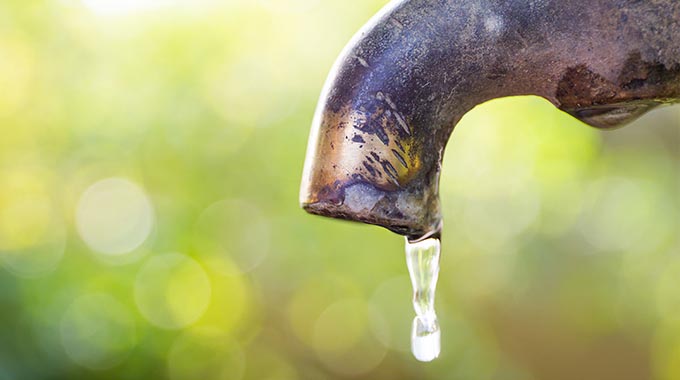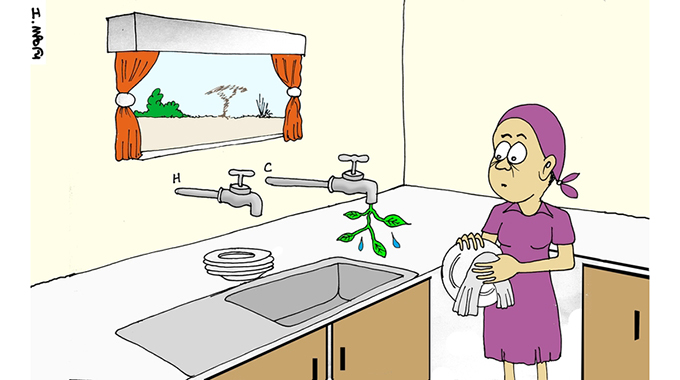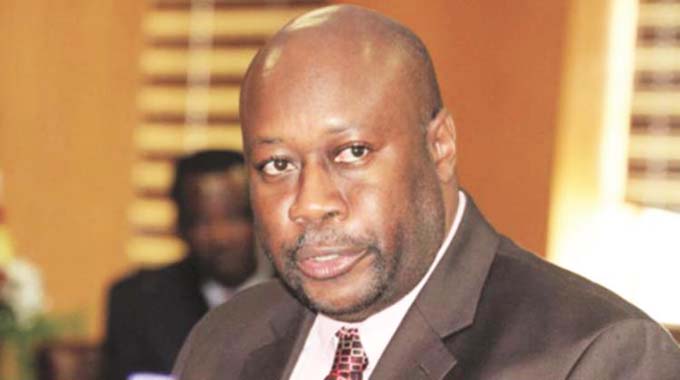EDITORIAL COMMENT : Water crisis: Time for sustainable solution

The water woes of Harare City Council are largely of its own making and it has to now initiate the action required to provide a lasting solution, not a difficult task since what is needed is restoration and expansion of assets already in place.
The main fact that those addressing Harare’s water problems must start with is that the main supply dams — Lake Chivero and Lake Manyame — that store the raw water for the city and its surrounding urban councils are downstream of the city. Even the two smaller dams, Harava and Seke, are downstream of some parts of Harare and of Ruwa and Epworth.
On the upside this means that the metropolitan area never need run short of raw water, even in a drought year, since more than half the water extracted can be recycled. It also means that the councils, businesses and residents of the area should be fanatical about not polluting their water supply by dumping toxins in the storm water drainage or the sewers.
On the downside there is the need to pump treated water uphill to all users, not that great a burden, and a need to ensure that all sewage treatment is done to a high level and that we are all very careful about what we dump in drains. But the law requires a high standard of sewage treatment, basically to something approaching drinking water quality, before effluent can be dumped back into a river and those polluting water sources can be hit by fines and even jail terms.
Up until the mid 1980s Harare could not treat its sewage to the required levels to allow discharge into rivers. The effluent was instead sprayed onto farmland near the city and even on those farms there were limits to what could be grown for eventual human consumption.
But in that decade both the Firle treatment works, which cope with the sewage from the Mukuvisi catchment, and the Crowborough works, which deals with the Marimba catchment, were rebuilt to the most modern standards. The consulting engineers who did the design work won international prizes.
As they were commissioned it was found that the water downstream of the two sewage works was significantly higher quality the water upstream, so good was the treatment process.
Plans, still to be implemented, were being drawn up to upgrade the existing sewage works on the Nyatsime River draining Chitungwiza and the Ruwa River draining far eastern Harare and Ruwa and to build the eventual sewage plant on the Gwebi River, draining far northern Harare and Mount Hampden, to the same standard.
This was all part of the process of sorting out inherited deficiencies by doubling the size of the Morton Jaffray Works and doubling the distribution of water in Harare and surrounding towns.
At this time, with water in the supply dams being clean the main problems were higher than desired nutrient levels caused by fertiliser leeching. This fed the water hyacinth in Lake Chivero, but did not really affect the quality of water, just the quality of boating.
Four simple chemicals were required to treat water as a result: alum to coagulate the muck, lime to adjust the acidity and help clean, activated charcoal to remove the dissolved chemicals and chlorine to kill the bugs and keep them dead.
Then the rot started. The sewage treatment plants were not properly maintained. They were not expanded to cope with the greater loads from expanding populations and economic growth.
New plants were not built on the other drainage systems. Municipal inspectors that used to hunt down polluters were withdrawn, so some could use the drains to dump toxins without reprisal.
Even when money started becoming available to fix and expand the plants corruption and the like derailed the exercise.
So the result is that Lake Chivero, the main storage dam, is a filthy toxic stew close to ecological collapse. Even when good rains fall and the Manyame River flows strongly to fill that dam and flush it out, it just moves pollutants downstream to the larger Manyame Dam and messes that lake up.
Harare municipal engineers now have to use a cocktail of 12 chemicals, instead of a basic four, to clean the water at vast expense, more than the city can afford. To give the water engineers their due, the treated water is reasonable quality although in some areas problems with distribution pipes and filthy feeder reservoirs discolour the water.
And the distribution network problems are another mess that the city needs to attend to.
What is now needed is for the entire metropolitan area to take its water seriously. The modern activated plants already there need to be restored and expanded. The more basic plants on other basins need to be rebuilt with modern technology. Polluters need to be hunted down and stopped. That will at least start the process of cleaning the water as only clean non-toxic water will be flowing in.
As the water being treated starts off being cleaner, treatment costs fall fast, freeing up funds to fix the distribution network.
Harare and its satellite towns are the centre of an aspiring modern state. Yet water and sewage treatment are kept at levels that would disgrace a Victorian parish. We need to stop complaining and start doing something.
And what is most irritating is that we know, technically, exactly what we need to do yet our councils do not seem to care.
They need to change.








Comments